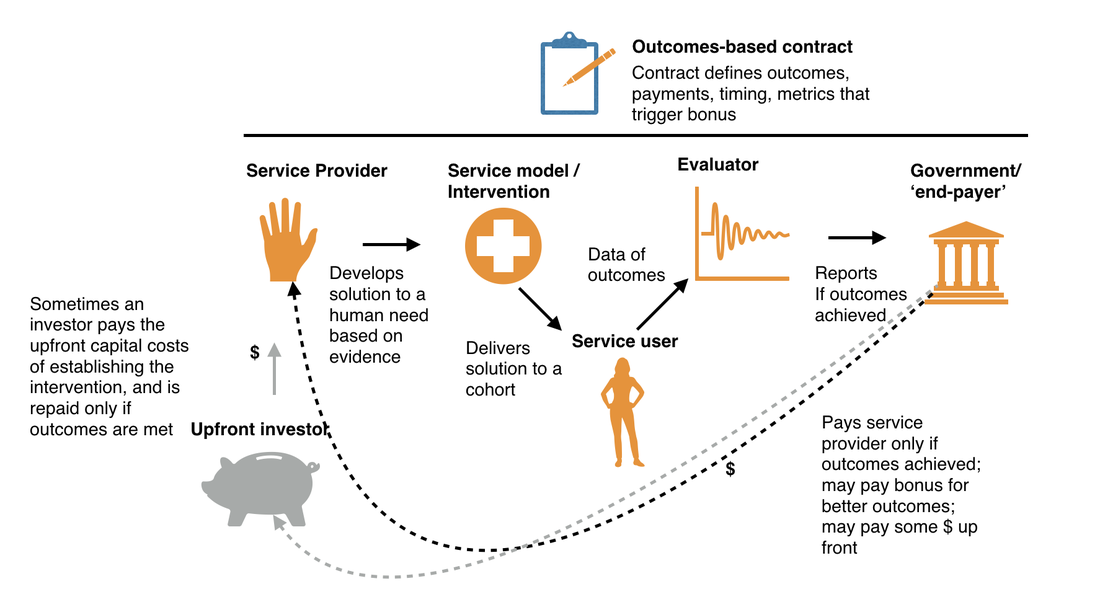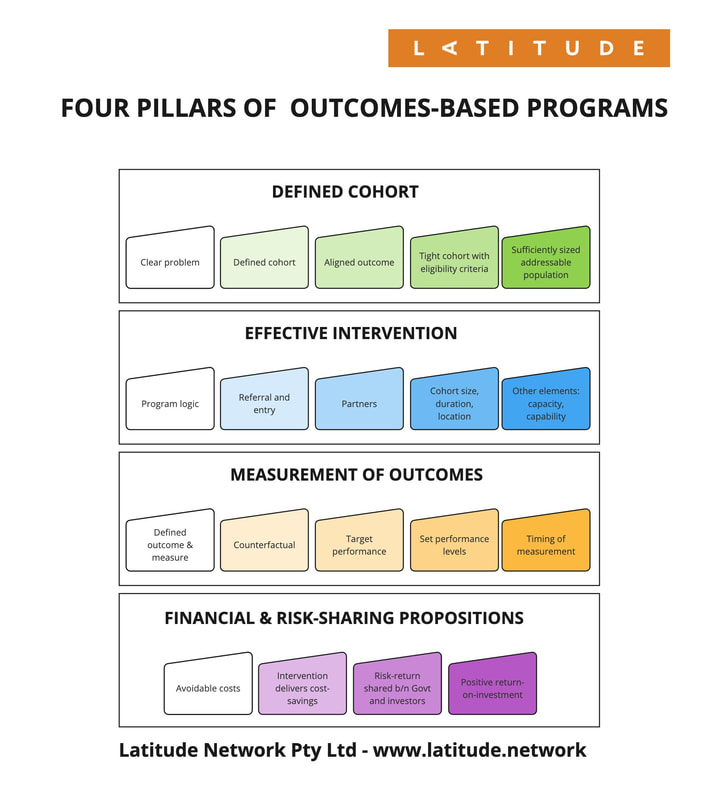Outcomes Funding Advisory |
|
We design and negotiate compelling programs and proposals that engage funders and deliver social impact.
This is particularly useful when funders (government or philanthropy) are seeking novel or innovative solutions such as outcomes-based funding or performance-based contracting that have higher requirements for success.
This is particularly useful when funders (government or philanthropy) are seeking novel or innovative solutions such as outcomes-based funding or performance-based contracting that have higher requirements for success.
Services include -
- Government tender preparation - Develop compelling program design & financial propositions in response to changing or novel government funding opportunities.
- Business case for funding - Develop business cases (financial case, cost/benefits and impact / evidence) for social organisations seeking new funding (from philanthropy or government) for high impact programs or infrastructure.
- Outcomes contract design/negotiation - Negotiate outcomes-based funding agreements that provide ongoing, sustainable funding (for more information see below on this page)
- Social Impact Investments - (Social Impact Bonds/Social Impact Investments/Social Benefit Bonds/Partnerships Addressing Disadvantage) - Assess and prepare Social Impact Investment proposals including financial models, avoided costs, outcomes and performance targets, and negotiate contracts with government funders.
Outcomes-based contracting
How an outcomes-based contract works.
A service commissioner (e.g. a government) negotiates a risk sharing agreement for service delivery with a service provider that measures results on an agreed set of outcomes measures, and provides incentives for achieving those outcomes. In some cases, outside investors and philanthropists may be involved to reduce risks, or the social organisation can take on the performance risk itself.
A service commissioner (e.g. a government) negotiates a risk sharing agreement for service delivery with a service provider that measures results on an agreed set of outcomes measures, and provides incentives for achieving those outcomes. In some cases, outside investors and philanthropists may be involved to reduce risks, or the social organisation can take on the performance risk itself.
4 Pillars of successful outcomes projects
Benefits for the social system and service users

- Improves lives, and solves difficult social problems
- Provides a laser-like focus on outcomes (defining them)
- Aligns the interests of public policy, service providers, service users and investors
- Builds an ‘eco-system’ of players with skills and an interest in delivering better outcomes
- Negotiation of contract provides flexibility and greater influence of data and service providers c.f. top-down commissioning models
- Leads to higher levels of performance
Benefits for social organisations

- Provides additional funds for proven and high-potential programs
- Provides incentive for continuous improvement and problem solving
- Builds financial capabilities and drives focus on data, costs, etc. - can be strategically transformative
- Feasibility work can be used to pitch for wider funding (no waste)
- Provides a path for innovation
- Provides a way to prove service model effectiveness for scale
- Can approach governments directly with proposals
Benefits for governments and commissioners

- Find out what works and what doesn’t: answers questions about effectiveness of interventions
- Enables significant avoided cost through preventative interventions
- Reduces upfront risks of new projects (risk shared between all players including investors)
- There are many global examples - it is no longer first mover risk
- Is a very flexible tool - outcomes, payments, metrics all negotiable
- Good stewardship requires a shift to outcomes-orientation over time
- Can appeal to all political persuasions
Interested in developing an outcomes-based contract proposal or business case for a high-impact program? Contact us to find out how.
The first step is often to develop a low-cost 'pre-feasibility' document identifying the opportunity for one or more existing programs. This is then taken to the relevant government officials to engage in a discussion about interest in moving to a full feasibility and joint-development phase of an outcomes-based project. It is possible to take a low risk approach at initial stages, while building the internal capacity and capability to develop future projects.





